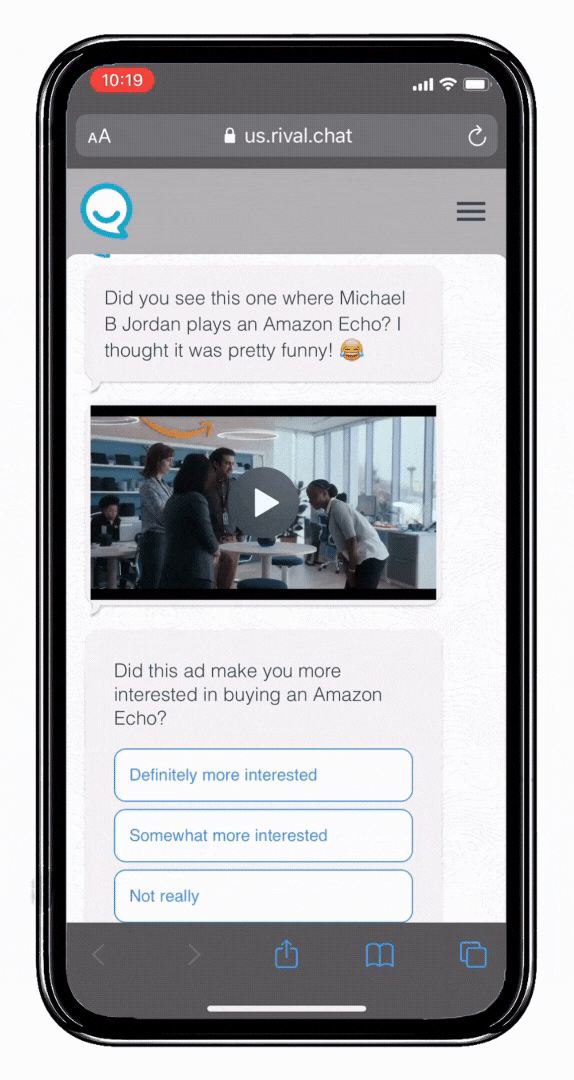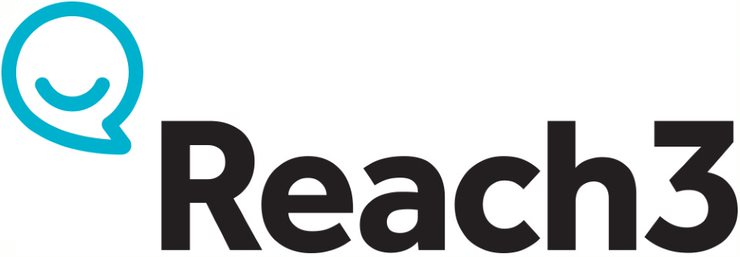How White Privilege is Shaping our Perception of Advertising
Exclusive research from Reach3 Insights and Rival Technologies reveals nuances in how consumers perceive representation in advertising today
1. Inclusive ads are important and consumers notice
Ads are not inconsequential. Of the almost 600 consumers we engaged in this research study, most think ads are important and make a difference. Consumers say that ads reflect society, so inclusive and diverse representation matters.
%
say diversity and inclusion in advertising is VERY important and makes a difference.
Even though consumers are more likely to be able to skip or avoid ads these days, they recognize the implicit effects that advertising has on them.
Traditionally underrepresented groups are more likely to say inclusion is very important in ads (69% among Black viewers, 51% among women).
Similarly, 59% say representation in advertising definitely has an impact in making people more accepting (74% among Black audiences).
Diversity and inclusion in ads has other specific social good benefits as well
%
agree that seeing ads with different types of people does help normalize diversity
%
have learned more about social causes and diversity from ads
And, doing the right thing is also good for your brand.
%
feel more positively about a brand if their advertising is diverse
%
agree that diverse advertising shows the brand cares about being inclusive
%
agree diverse advertising makes them feel better about buying from those brands
2. Diversity needs to be authentic, not opportunistic
Consumers are particularly skeptical of virtue signaling. 61% say advertisers only care about diversity to make themselves look good or make more money. Almost half say that ads about diversity mostly feel fake or performative, and 43% don’t really trust when a brand makes an ad about how diverse they are.

… yikes… ?
Consumers have seen enough brands crash and burn while trying to be woke. Viewers can break down exactly what feels problematic about an ad.
Consumers have seen enough brands crash and burn while trying to be woke. Viewers can break down exactly what feels problematic about an ad.

… yikes… ?
3. Generic messaging about diversity is getting old
Most are on board with diversity and inclusion, so continuously seeing commercials with the same generic messaging about diversity may start to feel like advertisers are shoving it down our throats. Even something well-intentioned and important can start to get old (e.g., see every COVID ad “in these unprecedented times”).
Others want brands to stay in their lane and stick to selling products, not telling us what to think. There’s something quintessentially American about only wanting to be sold products and not beliefs.
%
say advertisers have gotten too preachy about diversity
Why does diversity have to scream diversity? If it’s all about acceptance and being ‘normal’ then why does it have to be the forefront, why can the ad not be a regular ad but just includes people from all walks of life, all races?
I just want normal advertising that has people in it promoting the said product, not an ad that ‘teaches’ me how to act or interact. Ads need to be ads for the most part.”
Many argue that if we want something to feel normal, then it shouldn’t be a big deal. The best way to normalize diversity would be for it to be present but not a central focus of the ad.
A unique issue that advertisers face in addressing diversity is true statistical representation. If a population is technically representative, it would statistically match the general population of the United States. However about half of consumers are uncertain if perhaps advertisers have made an overcorrection in representation recently.
%
agree that it feels like there are now more minorities in ads than people who make up the majority.
Right now because of the riots and BLM this past summer, companies seem to be having Blacks in the lead role 50% of the time. It’s overboard. My people make up maybe 15%. I have a feeling if they were filming a caviar commercial, everyone would be a minority, instead of the 99% white customer base of the caviar.”
4. But it's important to recognize the (white) privilege in saying that there's so much diversity in ads these days
While generic, sweeping ads about diversity may leave consumers feeling exhausted, this varies greatly by ethnicity, sexual orientation, and political ideology. Certainly, there is merit that advertisers have beaten the message on the head over and over again, but traditionally underrepresented groups like Black or African American people and LGBTQ+ individuals largely do not share the same sentiment.
This is precisely what white privilege looks like. If watching ads on TV about race feels exhausting, then consider how people of color feel when they have to live with real, everyday reminders of systemic racism. Black communities may not have the privilege to just skip ads about diversity—they have to live it.
Have ads gotten too preachy about diversity?
Yes, it’s too much
%
among Total say that "Yes, it's too much"
- Male 31%
- Female 27%
- LGBTQ+ 10%
- Not LGBTQ+ 32%
- White 32%
- Black / African American 14%
- Hispanic / Latino 32%
- Asian 25%
- Liberal 13%
- Conservative 50%
- Urban 26%
- Rural 42%
It’s clear that straight, white, conservative, rural, and male respondents are more likely to share this feeling. While it is a valid concern that advertisers have gone overboard, we can see the impact of white privilege or white fragility (even in the way we watch ads) explicitly in our data.
Many are still fighting for a seat at the table.
For some, representation means not getting left out. For others, inclusion is important for practical use as well; those with disabilities need to be able to evaluate if a company’s product is even accessible for them too.
With BLM gaining public support, advertisers seem to have done a better job including more Black voices in advertising. When asked how well ads represent them, Black consumers respond similarly to white consumers.
However, diversity is not just Black and white… older adults and Asian Americans are most likely to feel left out of advertising.
How well do you think ads represent YOU specifically?
Meh or Yikes (could use work / not good at all)
- Total 27%
- 18-34 23%
- 35-54 19%
- 55+ 37%
- Male 27%
- Female 27%
- White 25%
- Black / African American 24%
- Hispanic / Latino 30%
- Asian 41%
Traditionally advertisers may gear ads towards younger audiences they view as more of the trendsetters or target demos. Asians also notice their historically lacking representation in advertising.
5. So how should advertisers thoughtfully approach diversity in advertising in the future?
We know consumers are looking for authenticity, and there’s no clearer way than to show authentic employees. Consumers explicitly mention that inclusion goes beyond just hiring diverse actors for the ad – diverse hiring at all levels is critical to be truly inclusive. If companies want their ads to feel real, then using real people is a no-brainer.
Consumers also look for ads that normalize diversity by not drawing too much attention to it. It should be clearly visible but not a central theme; and bonus points if it can genuinely make people laugh and poke fun about our differences in a way that includes everyone without putting anyone down.
Consumers also enjoy seeing their favorite celebrities, but adding a diverse celebrity does not prove the brand is inclusive. Celebrities and spokespeople do not represent brand nearly as well as the real people who work there, so consumers want to see diversity beyond famous cameos. Using a famous person of color can border on just casting token minorities, which can seem problematic especially if the brand is historically not known for being inclusive.
Consumers want MORE of these elements in ads:
- Ads featuring real diverse employees 41%
- Ads with diversity but don’t make it the main focus 40%
- About diversity but are actually funny (and not offensive) 33%
- Minorities or underrepresented people in lead roles 31%
- Showing giving back or supporting charities 26%
- Directly showing diversity and inclusion initiatives 17%
- Showing how brands are anti-racist 12%
- Making a political stand or statement 12%
- Including celebrities to show that they’re diverse 11%
Others say there’s TOO MUCH of these elements
- Ads featuring real diverse employees 20%
- Ads with diversity but don’t make it the main focus 22%
- About diversity but are actually funny (and not offensive) 16%
- Minorities or underrepresented people in lead roles 22%
- Showing giving back or supporting charities 23%
- Directly showing diversity and inclusion initiatives 29%
- Showing how brands are anti-racist 31%
- Making a political stand or statement 31%
- Including celebrities to show that they’re diverse 35%
Diversity will continue to be a delicate and important topic in every industry. As trends and consumer attitudes change over time, marketers need to keep their pulse on the consumer attitudes using modern research techniques that help provide foresight on what’s next. Conversational, mobile messaging-based approaches are proving to be a fast, easy, and effective way of getting ongoing insights from a more diverse and inclusive group of consumers. Get in touch with the Reach3 team to learn more.
Curious to know more?
At Reach3 Insights & Rival Technologies, we treat research respondents as people, not just data points. Using mobile messaging channels instead of email, we’re able to reach more targeted audiences to be more representative, and capture richer, stream-of-consciousness attitudes for scientifically validated insights. Our conversational chats are just that – chats that make people almost forget they’re taking a survey, so they give more honest opinions and feedback about their underlying emotions via text, photos, gifs, and videos. Come chat with us to learn more!

Total sample n=577, Fielded February 8-9, 2021
Let's chat!
Email us at info@reach3insights.com or
use the Contact button below.

www.reach3insights.com
info@reach3insights.com // SMS: (833) 4Reach3 // Phone: (833) 4Reach3